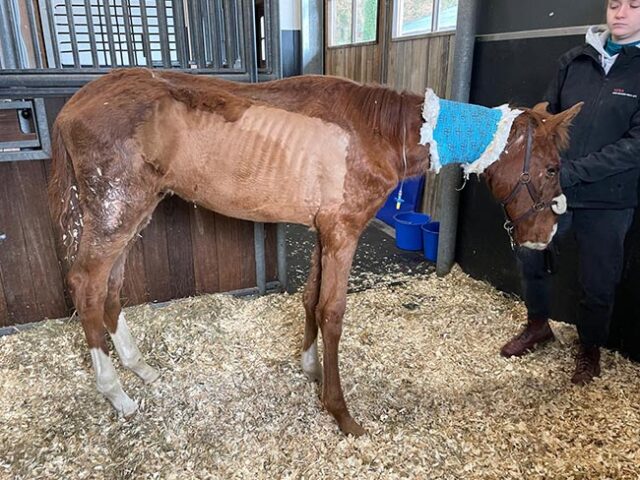By Tatiana Gojdyk – Head of Internal Medicine Dept., Equitom Equine Hospital
Parasites are an unseen enemy that can silently impact your horse’s health. While horses have coexisted with worms for centuries, an imbalance can lead to serious problems, such as weight loss (Fig 1), diarrhea (Fig 2), colic (Fig 3 and 12), and even life-threatening conditions.
The challenge? These parasites are becoming resistant to traditional dewormers, making strategic parasite control more crucial than ever. So, how can you protect your horse effectively? It’s not about deworming more – it’s about deworming smarter. Meet the parasites lurking in your pastures Your horse is constantly exposed to parasites through grazing, stabling, and interactions with other horses. Some of the most common parasites include: Roundworms (Nematodes): • Large strongyles (bloodworms) and small strongyles (Figure 4), also known as cyathostomins or redworms, pose the greatest threat to adult horses. Small strongyles can encyst in the gut, making them particularly difficult to eliminate. • Ascarids (Figure 5) – A major issue in foals and young horses, often leading to intestinal impaction and colic. • Pinworms – A nuisance causing tail itching and discomfort, often found in stalled horses. Flatworms: • Tapeworms (Cestodes) (Figure 6) – Attach to the intestinal wall of the cecum and can lead to digestive issues, including intussusception and severe colic. Most prevalent in horses over six months old, particularly in autumn. • Liver flukes (Trematodes) – Rare but possible, especially in horses cohabiting with cattle, sheep, and goats, as these animals serve as primary hosts. Found mostly in wet, marshy areas. Insects: • Botflies (Gasterophilus) (Figures 7 and 8) – Their larvae develop in the stomach after being ingested by the horse. These affect all ages, often appearing in late summer and autumn. Understanding which parasites are affecting your horse is key to developing a targeted parasite control plan.
The hidden life cycle of parasites
Worm infestations don’t happen overnight – they follow a predictable cycle (Figure A): ...
CLICK HERE TO READ THE COMPLETE ARTICLE IN THE ONLINE EDITION OF BREEDING NEWS




